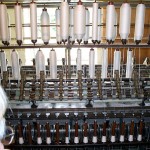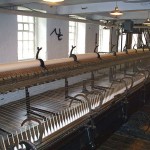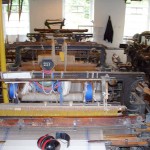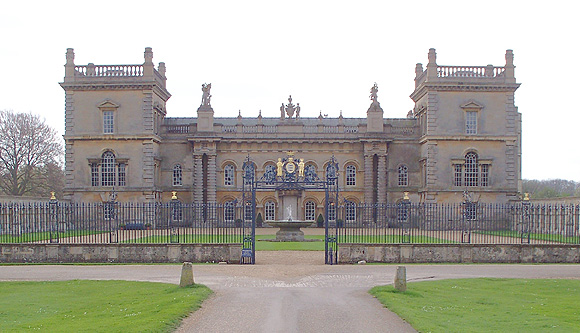
Private
Grimsthorpe Castle is a large country house in rural Lincolnshire, set in a 3000 acre park. Since 1516, Grimsthorpe has been owned by the holders of the Norman title, the Barony of Willoughby de Eresby.
Approaching the house along the drive, one sees the imposing North Front. Closer to, the East and West wings of a large square building are in a different style, while the South front, a Tudor-style jumble of gables, might be a totally different building.
The house was constructed in a number of phases. First there was a small castellated tower, which survives as King John’s Tower in the south-east corner. Then a Tudor house was attached to this, and later hastily extended to a Tudor house of four wings around a central courtyard. The Tudor North front was replaced by a newer one, which did not last long before it disappeared and was replaced by Vanburgh’s imposing North Front, which work extends as a skin about one-third of the way along the east and West sides. The last major change was to raise and re-skin the surviving Tudor East and West wings.
Inside, after entering the base of the left-hand front tower, one passes through a low vaulted hall before reaching one of a pair of staircases flanking the great hall, and getting a glimpse of the hall itself. Upstairs, one is directed into the State Dining Room, at first floor level in the tower, then southwards through the King James Room, State Drawing Room, and Tapestry Room in the east wing. After that, the South Corridor and West Corridor take the visitor around two more sides of an unseen central courtyard. One can look through doorways into various fine rooms.
Finally, one is allowed a limited view of the central courtyard, which contains an old tower at the west side, and a large single-storey service building to the north, adjoining the Great Hall.
Descending the north-east staircase, one is directed at ground level to the Chinese Drawing Room, with its fine wallpaper and oriel (bay) window, and the double-height Chapel in the tower. Vanbrugh’s Great Hall, with its superimposed arcades, is at the end of the visitor route.
There are many fine objects to look at during the tour, so if you think you did not spend enough time looking, you could go round again. If you go on a self-guiding day (Sunday) you will find helpful room guides in the main rooms and corridors.
There are two or three things that may affect your enjoyment of the visit. One is that the lighting in some of the rooms is very dim, reportedly to preserve fabrics and materials that are affected by light. This is common to many great houses, but the lighting in the King James room is so low that it is hard to see some objects clearly. One can not see out of any windows in most rooms.
The other is that no floor plan is included in the guidebook. In fact there seems to be no floor plan available anywhere. This is an irritant, since one cannot judge where one is within the building. Also, one cannot see what sections are excluded from the tour. In particular, one cannot judge from inside why the Tapestry Room is narrower than the State Drawing Room, something that a plan would make clear.
To remedy the plan deficiency, you can look at the Google Satellite view, which clearly shows the square courtyard and the irregular projections of the East wing and St John’s Tower.
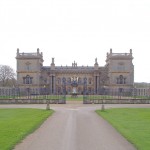
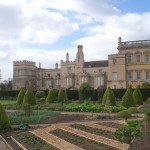
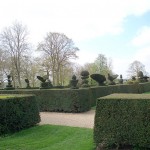
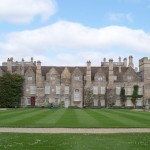
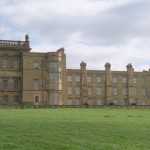
Category: Midlands
location
78 Derngate, Northampton
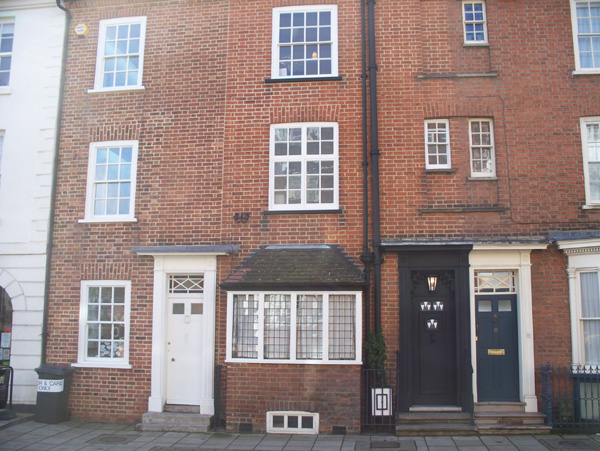 The house at 78 Derngate, Northampton, was transformed by the Glasgow architect Charles Rennie Mackintosh from a modest Victorian terraced house to a building with unique modern designs. The client was W.J. Bassett-Lowke, founder of a prosperous local model-making and engineering business.
The house at 78 Derngate, Northampton, was transformed by the Glasgow architect Charles Rennie Mackintosh from a modest Victorian terraced house to a building with unique modern designs. The client was W.J. Bassett-Lowke, founder of a prosperous local model-making and engineering business.
The transformation was carried out in 1916-17. The Bassett-Lowkes moved on nine years later, and the house passed through various hands before the Northampton Borough Council obtained a 999-year lease in 1996. The house was Grade II* listed in 1965. Full restoration was undertaken in 2001.
The adjoining house, no 80, was included in the project and stripped out to provide modern access and exhibition space. (In old photos, no 80 appears to have a 2-storey high bay on the front).
No 82, also now interconnected, contains gallery space and a dining room/cafe.
The house was jointly designed by Mackintosh and his client. Inside, the basement kitchen was very modern for its day. Upstairs at street level the dining room looks modestly modern, while the hall/lounge looks nearly as bizarre as the photo below suggests. Most surfaces are finished in black, with a coloured frieze applied to the walls, and black furniture. The staircase is turned through 90 deg from its original (and more conventional) position, and is divided off by a lattice screen, also painted black at this level.
At first floor level are the principal bedroom and the bathroom. The bedroom is relatively conventional, and has a balcony. The bathroom was modern in its day and is papered with a washable mosaic design.
On the second floor are a study, repainted in the original colours, and the guest bedroom, which has a striking fabric backdrop to the twin beds which continues up the ceiling.
The house has been restored to its 1917 appearance. Some features are original. Some of the lost original features are replaced by near-equivalents which differ slightly from the originals, and the installation of furniture (usually replicas) seems to be a work in progress.
If you are interested in Mackintosh’s work, or modern design, this house is definitely worth a visit.
Nearby: The Museum & Art gallery, the Guildhall, and St Peter’s Church.
Getting there: there are multi-storey car parks for the Derngate theatres etc. Northampton railway station is a 20 min walk away.
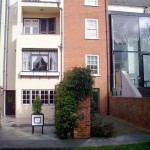
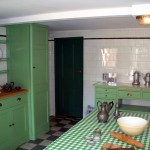
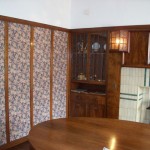
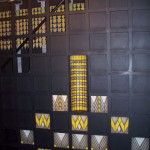
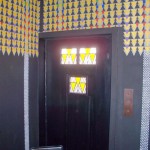
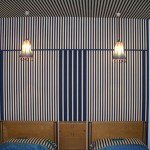
Coughton Court, Warwickshire
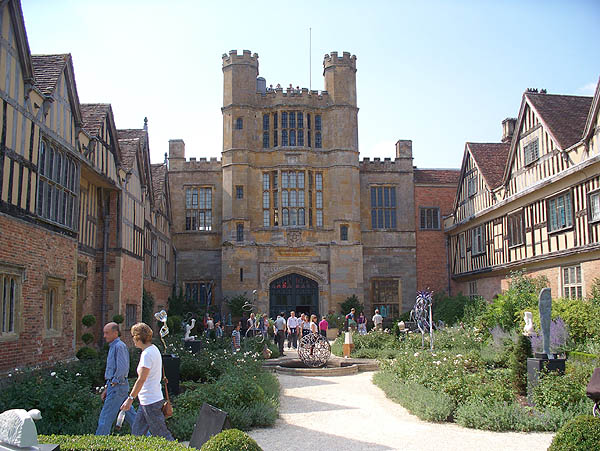
National Trust
The Throckmorton family have owned Coughton (pronounced ‘coat-on’) since the 1400’s and the present house, with its gatehouse and two wings, dates from the 16th century onwards. The Throckmortons were a Catholic family, and much of their history is a story of persecution, secret worship, and hiding priests. The family were also entangled in the Gunpowder Plot conspiracy.
The house, as seen from the courtyard, has two projecting brick and timbered wings in a Tudor-ish style, connected by an imposing stone gatehouse. From the other, West, side, the stone gatehouse, flanked by a pair of Gothic styled wings, dominates.
Parts of the gatehouse, including the roof, and most of the South wing are opened to visitors. A ‘priests’s hole’ can be seen in the tower. The house contents are interesting, and include some religious relics. The double-height Saloon is the biggest room, and apparently was the medieval Hall. Looking at the ground-floor South wing plan, it appears that there are some spaces near the end of the tour that are easy to miss.
In the grounds, there is no shortage of things for visitors to look at: a walled garden, a lake, river walks, an orchard, two churches, and a vegetable garden. When I visited there were scores of for-sale sculptures dotted around the grounds.
Coughton appears to be a popular destination, and if you want to go around the house it is advisable to go early to avoid being caught out by the timed entry ticketing.
Ragley Hall, Warwickshire
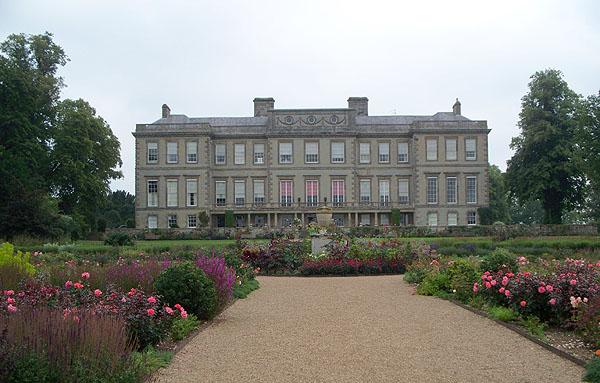
Private.
Ragley Hall was built from 1680, but not fully furnished and decorated till the middle of the 18th century. The house and the contents have not been greatly changed in style since then, but extensive restoration had to be carried out after the Second World war, when the house was used as a hospital. It is still owned by the Seymour family (Marquess of Hertford), who have owned the estate for centuries.
The principal floor contains a number of finely decorated rooms with impressive plasterwork, starting with the double-height Great Hall and continuing through the Music Room, Breakfast Room, Dining Room, Mauve Drawing Room, Red Saloon, Green Drawing Room, and Library. The contents are unremarkable, as all the best stuff went to the Hertford’s house (Wallace Collection) in London.
Some touches let you know that you are in a private home, not a National Trust house: a garish modern art canvas hung above the North Staircase Hall, the Prince Regents bed moved to provide a games room for the teenagers, and a vast and colorful modern mural by Graham Rust enlivening the South Staircase Hall.
Outside, there are formal gardens near the house, a stable block with an interesting carriage collection, an ice-house, and an extensive park including a lake.
Note that the standard admission admits you to the park and grounds only, and you have to pay a further fee at the house, if it’s open.
(If you are expecting to see an outdoor sculpture collection, you won’t, as it was removed over a year ago.)
No interior photography was allowed. Click on images to enlarge.
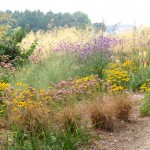
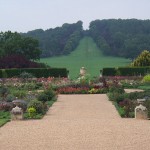
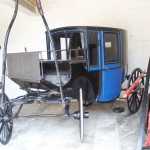
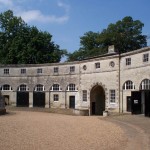
Speke Hall, Liverpool
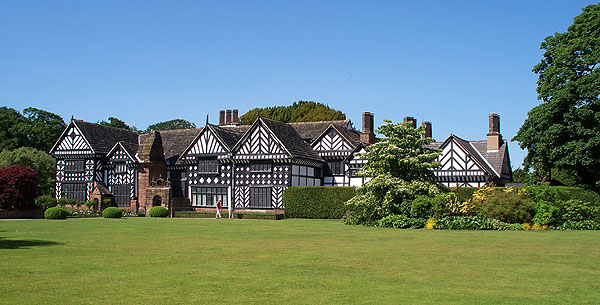
National Trust.
Speke Hall was built in stages during the sixteenth century by the Norris family, and now comprises four timber-framed ranges built around a central courtyard. The south-eastern corner with the Great Hall appears to be the earliest part, and the east range, containing the kitchen and scullery, is the latest.
The house later was neglected, and when purchased by Richard Watt in 1795 it appears to have been derelict, with the west wing in complete decay. A full restoration was not carried out until the 1850’s, and this gave the interiors their present antiquarian character. William Morris wallpapers were put up in various rooms. The Tudor-style furniture was mostly introduced in the 19th century.
The double-height Great Hall is of irregular shape and contains two fireplaces and elaborate wooden panelling and bay windows. The Great Parlour has an ornate plaster ceiling, and a large fireplace with above it carved wood panels representing William Norris II with his two wives and nineteen children. At the other end of the room is a massive oak buffet containing pieces of older carving.
The Blue Drawing Room was fitted out in the 17th century. It is presently decorated with William Morris wallpaper, and furnished with a suite of Louis XV style furniture purchased in the 19th century. There are several bedrooms on display. The arrangement of the kitchen and scullery dates from the Victorian renovations of around 1855, and the present cooking range was installed about 1910.
There are formal gardens around the house (mainly behind to the South) and a substantial park with woods, a kitchen garden and orchard, maze and visitor block (formerly a farm).
The black and white exterior of the house is striking, and the interiors contain many features and furnishings of interest. Outside, one can enjoy the formal gardens and walk in the wider grounds, which form an oasis of green in an area which today is heavily industrialised, with the airport a few hundred yards away. The River Mersey should be visible from the south edge of the grounds. (Click on images to enlarge)
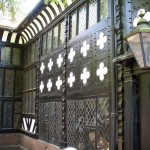
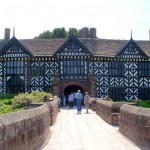
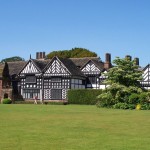
Chester city, Cheshire
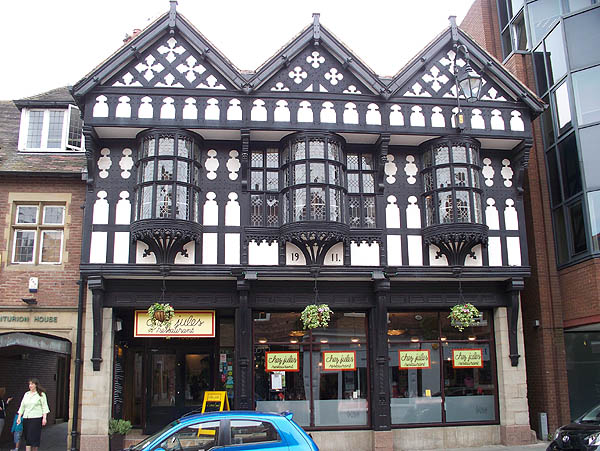
The city of Chester seems to be regarded as a historic attraction in its own right.
The centre of Chester is built on top of the site of a large Roman fort, and some of the present-day streets follow the line of streets in the Roman fort. Some Roman wall and tower foundations are still visible in places. The walls standing today enclosed the Saxon and Norman town, and partly follow the line of the Roman walls (fort perimeter). It is possible to walk around the circuit of the walls and cross above various gateways.
There are many interesting old buildings, including about 28 grade I listed structures. Some of the black and white half-timbered buildings have medieval timber frames but were given new replica fronts in the Victorian period, and others are Victorian, part of the “black and white revival”. In this part of the city, the famous “Rows” comprise shopping arcades on two levels.
The Victorian Gothic Revival town hall is worth a look. In Eastgate, the Eastgate Clock is much photographed.
Many flat areas outside the medieval walls, such as the Roodee racecourse, site of an ancient port, were formerly water.
There is a museum (free) in Grosvenor Street which is worth a visit if you are interested in the city’s history.
The partially excavated Roman Amphitheatre in Vicars Lane is easily found.
The old walls are pierced by a railway line and by a 1960’s bypass, proving that at certain times in the past the city’s heritage was little valued. In the north-west corner one can see canal, road and rail within a few yards of each other.
My coach tour also visited the village of Eccleston near Chester, part of the Duke of Westminster’s estates. Here the cottage architecture and the church (consecrated 1900), which contains several memorials to Dukes of Westminster are of interest.
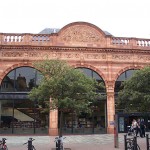
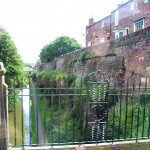
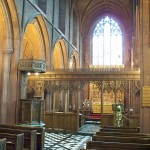
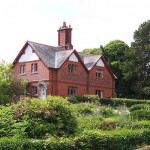
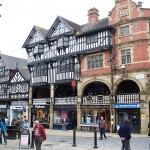
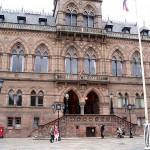
Alderley Edge, Cheshire
Alderley Edge is famous for the sandstone ridge above the town, which can be visited by parking in the National Trust’s useful but easy-to-miss car park and walking one or more of the marked trails. The views apparently used to be more open, with the Edge being bare until the 18th century, but now the ridge is quite wooded, and good views over the Cheshire plain and to the hills of the Peak District can be had only from a few vantage points.
The Edge is associated with legends, the best known one being about a farmer meeting a wizard, and also with the writer Alan Garner and his novels, some of which are set in the surrounding country. The woods contain the remains of many old mines. Mining for copper and other metals went on in the area from prehistoric times to the 20th century, and there are many old relics. A stone circle however was apparently built in Victorian times.
From the town, go up the High Street and take the left uphill fork just before the large half-timbered pub on the right.
I walked around one of the trails to the edge of the woods and saw some distant hills.
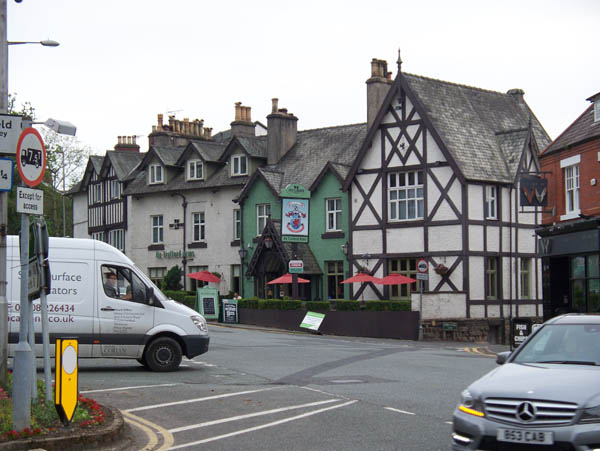
Alderley Edge, the town, lies in one of the most sought-after residential districts in Britain. If you have to spend some time there, you could patronise one of the smart cafes and shops etc in the High Street, in hopes of spotting some famous footballer or soap star, or you could wander around the side streets spotting elegant Victorian villas lurking behind exotic flowering trees. There are one or two buildings in the High Street that might be old, including the Barclays Bank and a large pub with lots of external wood.
Tatton Park, Cheshire
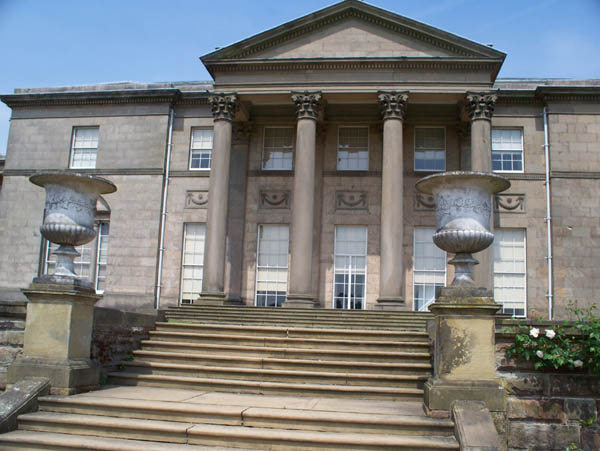 National Trust.
National Trust.
Tatton Park is a complete historic estate with the Neo-Classical mansion, a Tudor Old hall, 50 acres of landscaped gardens, a working farm and over 1000 acres of deer park. It was owned for hundreds of years by the Egerton family. The core of the present mansion was completed around 1716. The mansion was then extensively altered in the fashionable Neo-Classical style in two stages between 1780 and 1813, by the architects Samuel Wyatt and his nephew Lewis Wyatt.
The Mansion is richly furnished and has a valuable collection of paintings and books. In the Library, facsimiles are displayed of one or two of the more interesting volumes, including the Wallington Manuscript facsimile (a diary of the Civil War period which makes very interesting reading with its enthusiastic descriptions of executions and civil warfare).
The Gardens have many areas with flowering trees etc, several large ponds, a Japanese garden (seen from perimeter), Italian Garden, 6 acre kitchen garden, tropical and temperate conservatories.
When I visited, I enjoyed an interesting special tour conducted by two “servants” which started at 10.30 am. Then I visited the gardens (large and impressive) then made a free-flow visit to house. Total 4.5 hours. (Click on images below to enlarge)
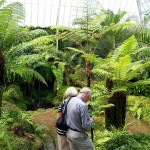
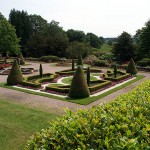

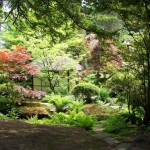
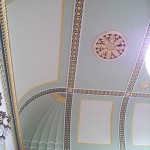
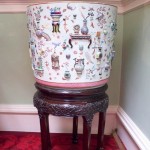
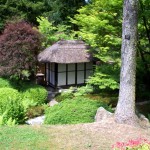
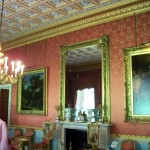
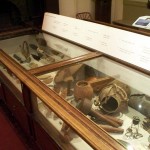
Lyme Park, Cheshire
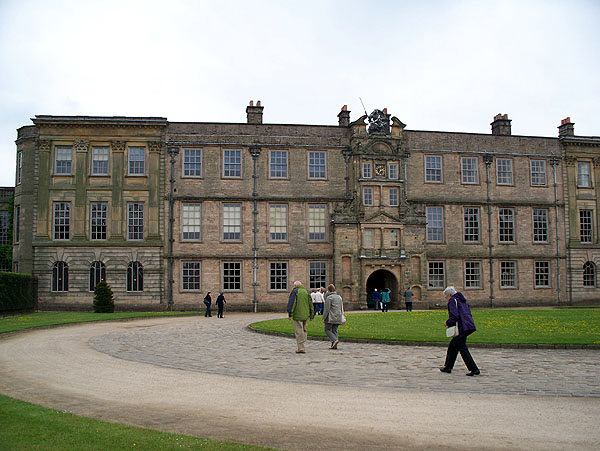
National Trust.
Lyme Park has been gradually developed since the Middle Ages. It was largely rebuilt during the reign of Elizabeth I, and the centre of the north front dates from this period. The Palladian courtyard, South front and West front date from the 18th century, and further alterations, mainly affecting the interiors, were carried out by the architect Lewis Wyatt in the 19th century. Wyatt altered floor levels, access routes and the functions of many of the principal rooms as well as changing the decor.
Internally, the house has a generally Jacobean aspect. Some rooms, like the Drawing Room, have survived from the Jacobean period with minor alterations, while others have been reworked, while still being fitted out in a Jacobean style.
The house was owned by the Legh family from the Middle Ages till 1946.
On the first floor, many of the principal rooms are on display, while on the second floor, the Long Gallery and some other rooms can be seen. A tour can take around 2 hours.
The gardens, mostly to the south, are very fine, with a lake and large changes of level. The Dutch formal garden seen from far above is particularly impressive. There is also a substantial park (not seen).
Photography of the interior of the house is not permitted, but I took some pictures of the gardens (click on images to enlarge).
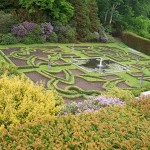
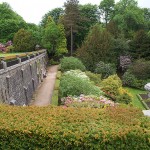
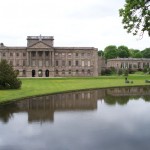
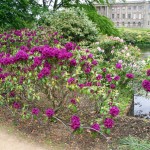
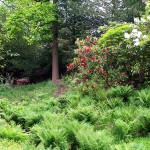
Quarry Bank Mill, Cheshire
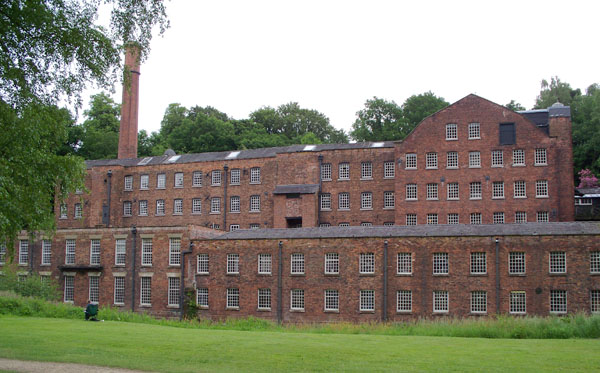 National Trust.
National Trust.
The Mill was started in the 18th century and remained in the ownership of the Greg family for five generations. The business closed in the 1950’s. The workers, housed nearby, included children as young as nine, and unpaid pauper apprentices. The cotton was cheap because it was produced by slaves in the southern United States. The mill was powered by water-wheels, and later by steam.
The original mill building contains exhibitions and representative old spinning and weaving machines, which can be seen running (noisy!). The machines were originally powered by water or steam power (latterly electricity), and in the lower levels a working restored water wheel and some working steam engines can be seen. It’s interesting to see what impact the production of cotton cloth had (social change, industrialisation, riots) and what ingenuity went into producing a piece of cloth.
Beyond the mill, the Quarry Bank garden and kitchen garden can be seen. Further afield are the Apprentice House and the Styal Village (not seen).
This is an interesting site, and a proper visit will occupy about half a day.
